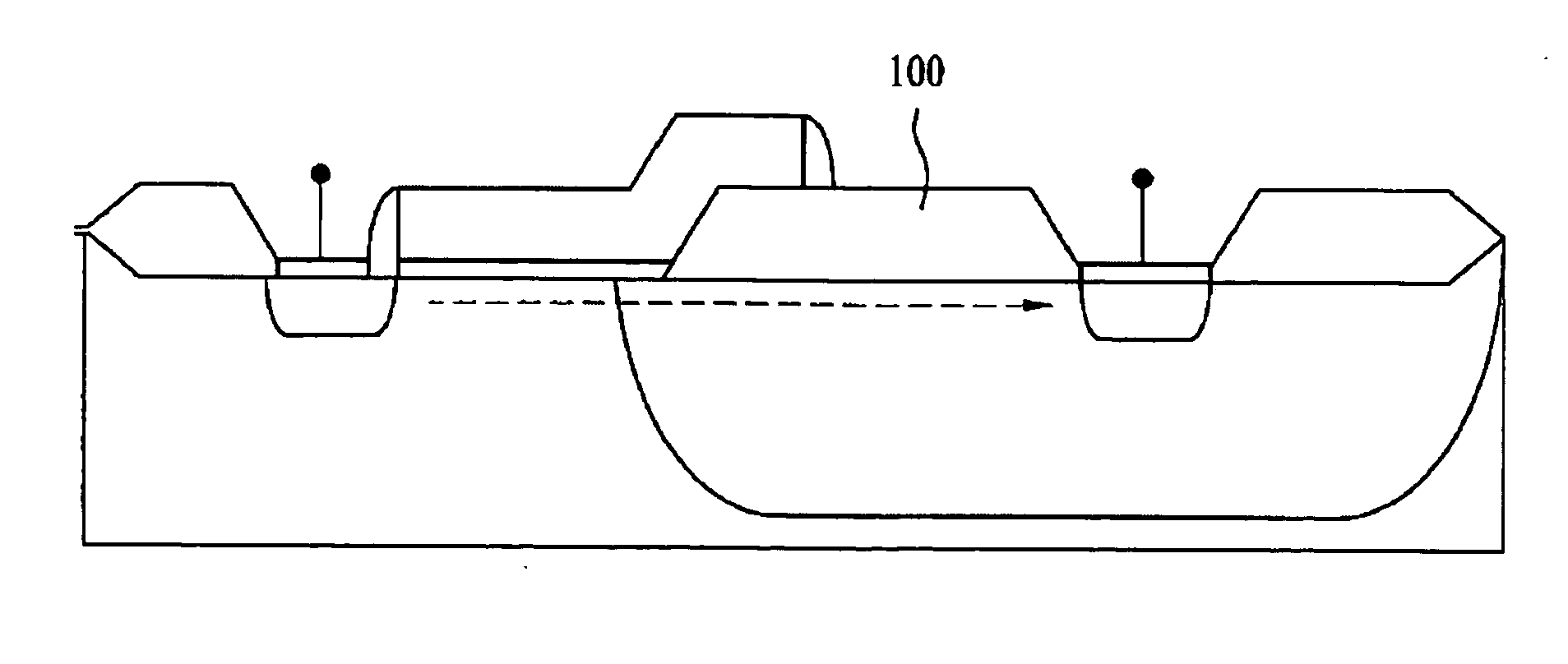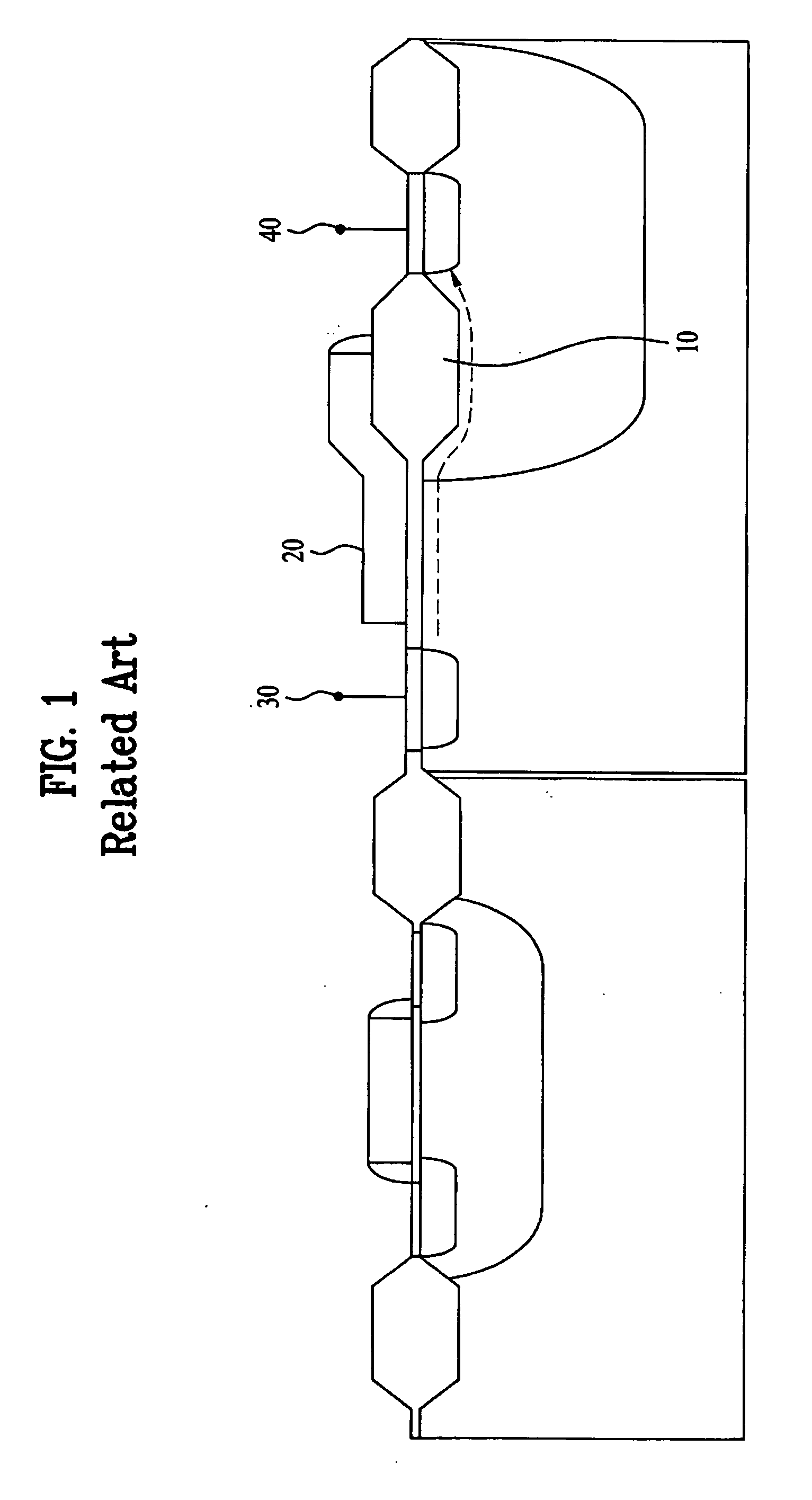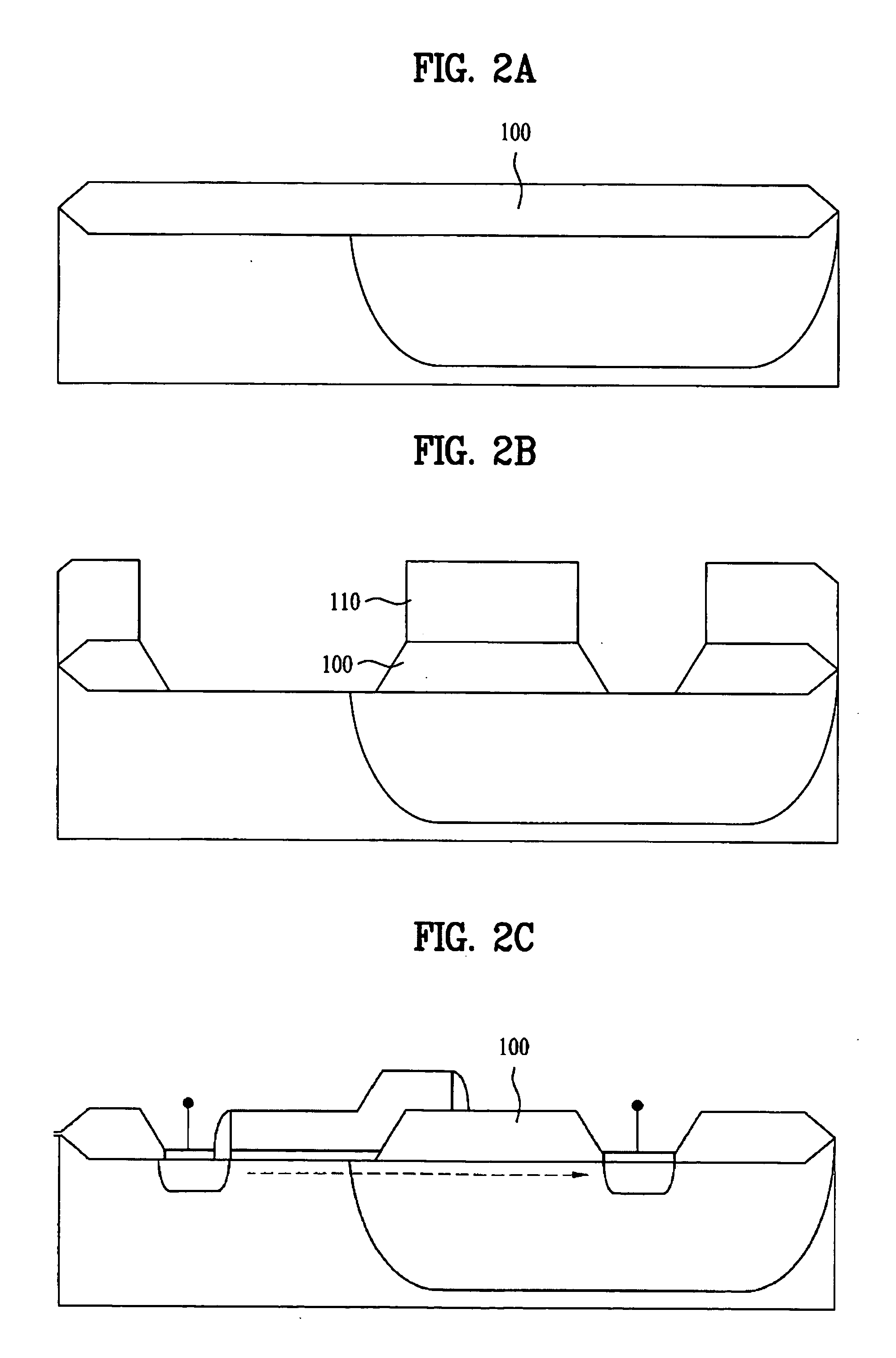Method for forming LOCOS layer in semiconductor device
- Summary
- Abstract
- Description
- Claims
- Application Information
AI Technical Summary
Benefits of technology
Problems solved by technology
Method used
Image
Examples
Embodiment Construction
[0017] Reference will now be made in detail to exemplary embodiments of the present invention, examples of which are illustrated in the accompanying drawings. Wherever possible, like reference designations will be used throughout the drawings to refer to the same or similar parts.
[0018] High voltages are typically applied to a double-diffused MOS (DMOS) or lateral DMOS transistor. In such devices, if the source-to-drain current path can be made shorter, the device's on-state resistance may be reduced and its current driving capability may be enhanced.
[0019]FIGS. 2A-2C respectively illustrate steps of a method for forming a LOCOS layer in a semiconductor device in accordance with the present invention.
[0020] As shown in FIG. 2A, a silicon oxide layer (e.g., a “pad oxide”) is deposited or grown on a semiconductor substrate having p-type impurities therein. Then, the silicon oxide layer is coated with a first layer of photoresist, which is developed via an exposure step using a mask...
PUM
 Login to View More
Login to View More Abstract
Description
Claims
Application Information
 Login to View More
Login to View More - R&D
- Intellectual Property
- Life Sciences
- Materials
- Tech Scout
- Unparalleled Data Quality
- Higher Quality Content
- 60% Fewer Hallucinations
Browse by: Latest US Patents, China's latest patents, Technical Efficacy Thesaurus, Application Domain, Technology Topic, Popular Technical Reports.
© 2025 PatSnap. All rights reserved.Legal|Privacy policy|Modern Slavery Act Transparency Statement|Sitemap|About US| Contact US: help@patsnap.com



